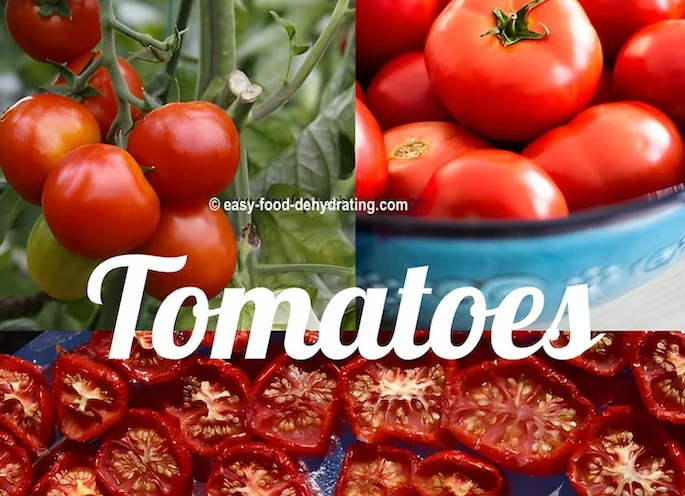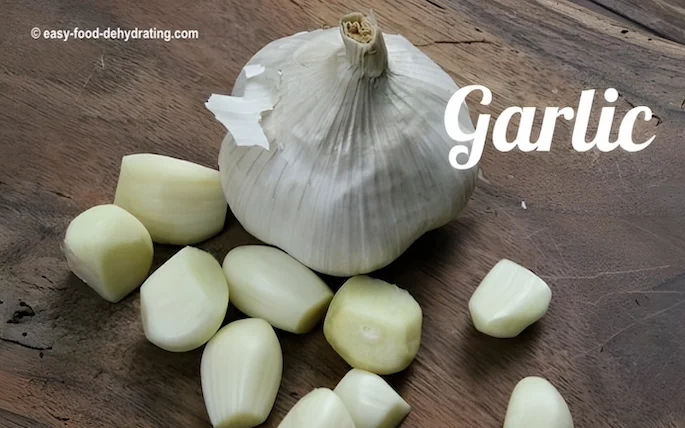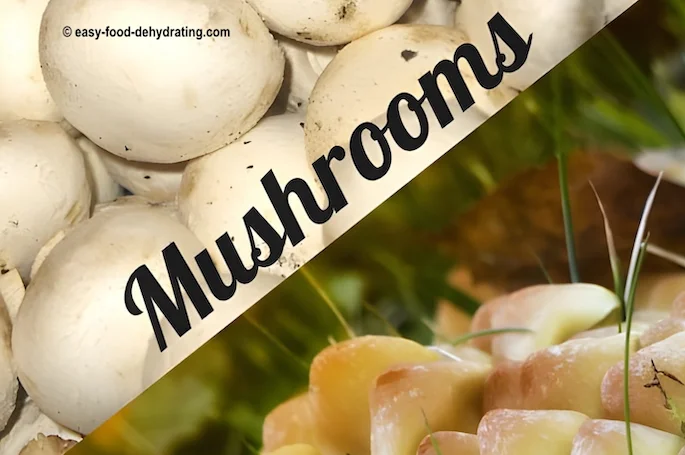- Home
- How To Dehydrate Vegetables
- How To Dehydrate Corn
How to Dehydrate Corn:
From Fresh or Frozen!
How to Dehydrate Corn:
From Fresh or Frozen!

Susan Gast | Author and blogger at Bored Boomers, Beesville Books, A New Sober You and Easy Food Dehydrating
Let's get busy learning how to dehydrate corn! I do it fast and easy by using bags of frozen corn!

Of course, you can't beat using fresh corn sliced off the cob.
Corn is fantastic in vegetable soups and stews, fritters, or as a corn chowder and you can grind dried corn into cornmeal!
Frequently Asked Questions:
Can you dry corn kernels?
Can you dry corn kernels?
Yes, and we show you how, here. From either fresh, or from frozen!
How do you dry corn for seed?
How do you dry corn for seed?
To properly dry corn for saving as seeds, here are the key steps:
- Allow corn to fully mature and dry out completely on the stalk in your garden. Kernels should be hard and shrunken down when ready for harvest.
- Pick a day with hot, sunny, breezy conditions. Pull back husks and remove ears of corn from the stalks. Take off as much silk as possible.
- Bring corn indoors to dry out further. Place ears in a single layer on screens, paper bags, or hang in mesh bags in a warm, dry, well-ventilated area.
- Allow to dry for 2-4 weeks, checking moisture content periodically by hand shelling a few kernels to test. Kernels should be rock-hard when crunched.
- To shell, rub cobs vigorously together over a bucket, bag, or tarp to remove kernels, picking any remaining off by hand. Discard cobs.
- Further dry shelled kernels by continuing air exposure for 1-2 months until a moisture meter reads 10-12% or lower, stirring periodically.
- Store thoroughly dried corn seeds in cool, airtight containers to maintain viability for the next planting season.
How do you dry corn husks for tamales?
How do you dry corn husks for tamales?
Use a food dehydrator to dry corn husks for making tamales. Here are some tips:
- Clean husks thoroughly by rinsing and patting them dry. Trim off any excess silk.
- Arrange the husks in a single layer on the dehydrator trays without overcrowding or overlapping.
- Set the dehydrator between 95°F to 115°F. Any higher may make husks too brittle.
- Dehydrate for 6 to 10 hours, checking periodically. Carefully rotate trays and flip husks over about halfway through for even exposure.
- Corn husks are fully dried when they are lightweight, crispy, and rattle when shaken. No moisture should remain and they will have lost pliability.
- Turn off the dehydrator and allow husks to cool completely before removing. Then store in airtight bags or containers until ready to rehydrate.
- To rehydrate, soak husks in room temperature water for at least 30 minutes up to a few hours before patting dry and assembling tamales.
An Excalibur dehydrator works great for this because you can remove a tray or two to adjust for the height of the husk, just monitor carefully and remove immediately once dried to prevent over-drying. Have fun making tamales!
Can you dry corn for chickens?
Can you dry corn for chickens?
Yes, you can dry corn to create nutritious treats for chickens in the winter. Drying corn allows for longer storage, too.
Methods:
- Hang entire corn ears with husks removed in mesh bags in a dry indoor area with good ventilation. Let dry for at least four weeks.
- For loose corn kernels, spread in a single layer on mesh drying racks and dehydrate in the oven at 150-170°F with oven door ajar for several hours until hard and shrunken. Stir periodically.
- A food dehydrator with temperature set to 125-150°F also works well. Dry corn kernels for 6-12 hours, stirring occasionally.
- For quick oven drying, bake kernels on sheets. Stir frequently and bake for 1 hour at 300°F. Note some nutrients are lost with higher heat exposure compared to other methods.
Tip: For easier nibbling, grind very dry
corn kernels into smaller bits. Store dried corn in a cool place.
Rehydrate our corn first for easier digestion if you want softer treats.
Enjoy making this natural, seasonal treat for your flock of chickens to eagerly peck at! Adjust drying times based on your local humidity levels.
If you want to learn much more about looking after chickens, you need to check out my friend Cath's blog: Raising Happy Chickens.
Enjoy Fiber-Rich Corn on the Cob!
Frozen corn has got to be right up there with frozen peas for ease of dehydration! There's no excuse to not dehydrate these fantastic vegetables.
Corn Nutrition Info.
Frozen off-the-cob corn is a substantial source of these:
VITAMINS: Vitamin A, followed by Choline, Vitamin C, and Niacin. There are trace amounts of Vitamin E, Thiamine, Riboflavin, Pantothenic Acid, and Folate.
Frozen corn is a good source of:
MINERALS: Potassium, Phosphorus, and Magnesium, followed by Calcium, and Iron. There are trace amounts of Zinc Manganese, Copper, and Fluoride.
Frozen corn contains Omega-3 fatty acids and a high amount of Omega-6 fatty acids too!
Corn is rich in starch and dietary fiber—and the fiber is good news for a stubborn digestive system.
How to Dehydrate Corn ~ The EASY Way!
At Easy Food Dehydrating, we're all bout keeping things easy... so frozen corn wins hands down. For corn purists, read how to dehydrate fresh corn too! And then read on for how to dehydrate canned corn.
First: How to Dehydrate Corn That's Frozen
- Toss your frozen bag of corn kernels on the countertop a few times to loosen the kernels.
- Arrange the frozen corn on your food dehydrator trays, making sure there's some space for breathing room!
- Turn on your food dehydrator and set the temperature between 125°F and 135°F (or per your food dehydrator's instructions).
💡 Tip: Use our Fahrenheit to Celsius converter here on our site!
- Dehydrated corn will be brittle when fully dried.
- Drying time: between 6-12 hours.
- Please remember to rotate your trays for even drying.
Second: How to Dehydrate Corn from Fresh
For those of you with fresh corn (click the link to learn how to grow it), simply husk and wash them. Get a pan of water boiling and steam the ears for 4-5 minutes. Get them into cold water as soon as possible to stop the cooking process.
- Pull down/off the corn husks and cut off the end for a flat bottom. Cut the corn off the cob by standing the ear on the cut end, and slice downwards from the top to cut off the kernels. Make sure you get the whole kernel and not tons of stalk!
- Arrange the fresh corn kernels on your food dehydrator trays, making sure there's some space for breathing room!
- Turn on your food dehydrator and set the temperature between 125°F and 135°F (or per your food dehydrator's instructions).
💡 Tip: Use our Fahrenheit to Celsius converter here on our site!
- Fresh corn takes around 12-15 hours when fully dehydrated.
- It will be brittle and very hard.
Third: How to Dehydrate Corn from Cans
- Drain your canned corn.
- Arrange the canned corn on your food dehydrator trays, making sure there's some space for breathing room!
- Turn on your food dehydrator and set the temperature
between 125°F and 135°F (or per your food dehydrator's instructions).
💡 Tip: Use our Fahrenheit to Celsius converter here on our site!
- Dehydrated canned corn will be brittle when fully dried.
- Drying time: between 6-12 hours.
- Please remember to rotate your trays for even drying.


Is Corn Easy to Grow?
Corn is a type of cereal grain that's popular in many cuisines and is eaten on its own, used as an ingredient in other dishes, or processed into corn oil or cornstarch.
Corn is relatively easy to grow, and it’s a great crop for beginner gardeners. It’s also a very versatile crop, as it can be grown in a variety of climates and soil types.
If you’re thinking about growing corn, here are a few things to keep in mind:
- Corn needs full sun and well-drained soil to grow properly.
- It’s best to start corn seeds indoors in pots about 6-8 weeks before the last frost date.
- When transplanting corn seedlings to the garden, be sure to space them out evenly. Each plant should have about 2 feet of space all around it.
- Corn is a heavy feeder, so be sure to fertilize your plants regularly.
- Water your corn plants regularly, especially during dry periods.
- Harvest your corn when the ears are ripe. This is typically about 2-3 months after planting.
What Fertilizer Does Corn Need?
The best fertilizer for corn is a balanced fertilizer with an NPK (Nitrogen, Phosphorus, and Potassium) ratio of 10-10-10.
Apply fertilizer to your corn plants when they are about 6 inches tall. Apply additional fertilizer every 4-6 weeks throughout the growing season.
When applying fertilizer, be sure to follow the manufacturer’s instructions. Applying too much fertilizer can damage your plants.
A Cute but Corn(y) Story...

I was chatting with a lovely neighborhood gardener the other day.
We were talking about squirrels and that reminded him of the day when he couldn't believe that one of my neighbors was actually growing corn in their tiny back garden.
He asked them how their 'corn growing' was going and they were shocked to see actual stalks of corn! You see, they hadn't planted it.

And they hadn't even noticed it because they are 'snowbirds' and had just arrived back in town!
Apparently, before they left town, they had been feeding the squirrels out back with leftover corn cobs from dinner.
The squirrely squirrels took those cobs and buried them! Hence the nice batch of corn ears shooting up a few months later!
How Long Does It Take for Corn to Grow?
Corn typically takes about 2-3 months to grow from seed to harvest. This can vary depending on the variety of corn you’re growing and the growing conditions.
If you’re looking for a quick-growing crop, choose a variety of corn that matures in about 60 days. For a slower-growing crop, choose a variety that matures in about 90 days.
What is the Best Way to Plant Corn?
Corn is best planted in rows that are about 30 inches apart. Each seed should be planted about 1 inch deep and 2-3 inches apart. (Tell *that* to the squirrels, huh?)
If you’re planting more than one row of corn, space the rows about 3 feet apart. This will give the plants plenty of room to grow.
When Should I Harvest My Corn?
You’ll know your corn is ready to harvest when the ears are ripe. This is typically 2-3 months after planting.
To test if your corn is ready, peel back a few of the outer leaves and check the kernels. They should be plump and firm. If they’re not quite ready, leave the ears on the plants and check them again in a few days.
And when you've got leftovers? Skip feeding the squirrels—now you know how to dehydrate corn instead of burying it!
Thanks so much for stopping by to learn how to dehydrate corn.
Don't forget to grab your free Six Simple Steps eBook! It’s packed with tips for dehydrating everything from fruits and veggies to dog treats. Get it here.
Before You Go...
If you like the content, please give me some love by clicking on the 🩷 in the lower right hand corner (on just about all my pages). This signals to me that you find it enjoyable and useful. Thank you so much!
















